
21 minute read
The impact of social media bias to influence public opinion
In the digital era where everything must be done immediately, we find that journalists often consult a single source and write an article around this without adequately vetting the information. In their book, The Elements of Journalism, Bill Kovach and Tom Rosenstiel called the vetting process “discipline of verification”. They say, “in the end, the discipline of verification is what separates journalism from entertainment, propaganda, fiction, or art. Propaganda selects facts or invents them to serve the real purpose: persuasion or manipulation. Fiction invents scenarios to get at a more personal impression of what is called truth. Journalism alone is focused on the process employed to get what happened down right.”
Responsible journalism is the ability to hold oneself accountable. When you make a mistake, you must be able to own up to and correct it. We believe there is always another side to the stories we read in the establishment media, and most stories we read in mainstream media are either offered out of context, or are blown out of proportion to sensationalise.
Advertisement
Objectivity in reporting builds trust and confidence and journalists should always keep in mind that the words and images they use in a publication may be hurtful and may impact the lives of others.
The impact of social media
bias to influence public opinion
Developments in technology are creating a society in which social media is embedded and have an impact on the basic values and practices that have constituted good journalism. Most people now get their news and information from social media platforms like YouTube, Twitter, Facebook, Instagram, and online blogs where anyone can publish anything without it being checked or edited. There are also instances where fake news is being spread on purpose for sensationalism and to gain attention and attract an audience.
Professional journalists share the social media sphere with other social media users. Unfortunately, some reporters explore the world of digital media with little, if any, limits on personal commentary or bias opinions. Where does journalistic integrity fit into this?
Social media platforms have now become the conduit in which information is disseminated. There is little doubt that social media can shape public opinion and in general there is a great concern about fake news. Misinformation can spread faster than it can be checked. By interacting and participating, people can share information, exchange opinions, ideas, and news.
With the explosion of online social media platforms, an added concern is the connection between inflammatory speech and violent acts, as well as the role of global corporations that control the flow of information, including censoring and free speech. Because of changes and shifts in ideology within the political climate around the world, disinformation, misinformation, fake news, and increasingly inaccurate reporting, social media can increase discord. Online rhetoric from far-left and far-right groups have also contributed to violence.
The influence of social media on public opinion is a powerful force in public relations, culture, fashion, consumer spending and a whole range of other spheres. It is also widely accepted that social media can affect a person’s selfperception and mental health and numerous studies have warned about the link between heavy social media usage and depression.
Since its inception, journalism has gone through many different stages. The 21st century is the era of digital transformation and artificial intelligence. Journalists are still adapting to the internet age of posting articles online where the public can access the news on millions of different websites in cyberspace with the tap of a finger. Headlines are posted on Twitter using just a few characters. There is very little room for error because once posted online, it takes only a matter of seconds for the information to be available across the world. Unless a mistake is caught and corrected early, it will be shared and inadvertently become fact.
One can probably blame social platforms like Facebook for the decline in conventional media. But, an ability to produce stories that people like to read, combined with professionalism and ethics, are some of the essential qualities of a good journalistic writing that will keep the industry alive and well. “News organisations need to be on their toes to ensure that they are aware of the latest media developments, and should adapt accordingly, without risking their main purpose of existence in the journalistic field – to inform and to educate,” says Normahfuzah Ahmad from the University in Glaskow in his article, The decline of conventional news media and challenges of immersing in new technology.
Some media organisations, but not many, have in recent times taken steps to develop guidelines for journalist’s social media use. Hopefully such guidelines will help them to become better at their jobs. My concern is with the people whose lives have been impacted, and in any cases destroyed, by the malicious intent of unscrupulous journalists and disgruntled people of the world!
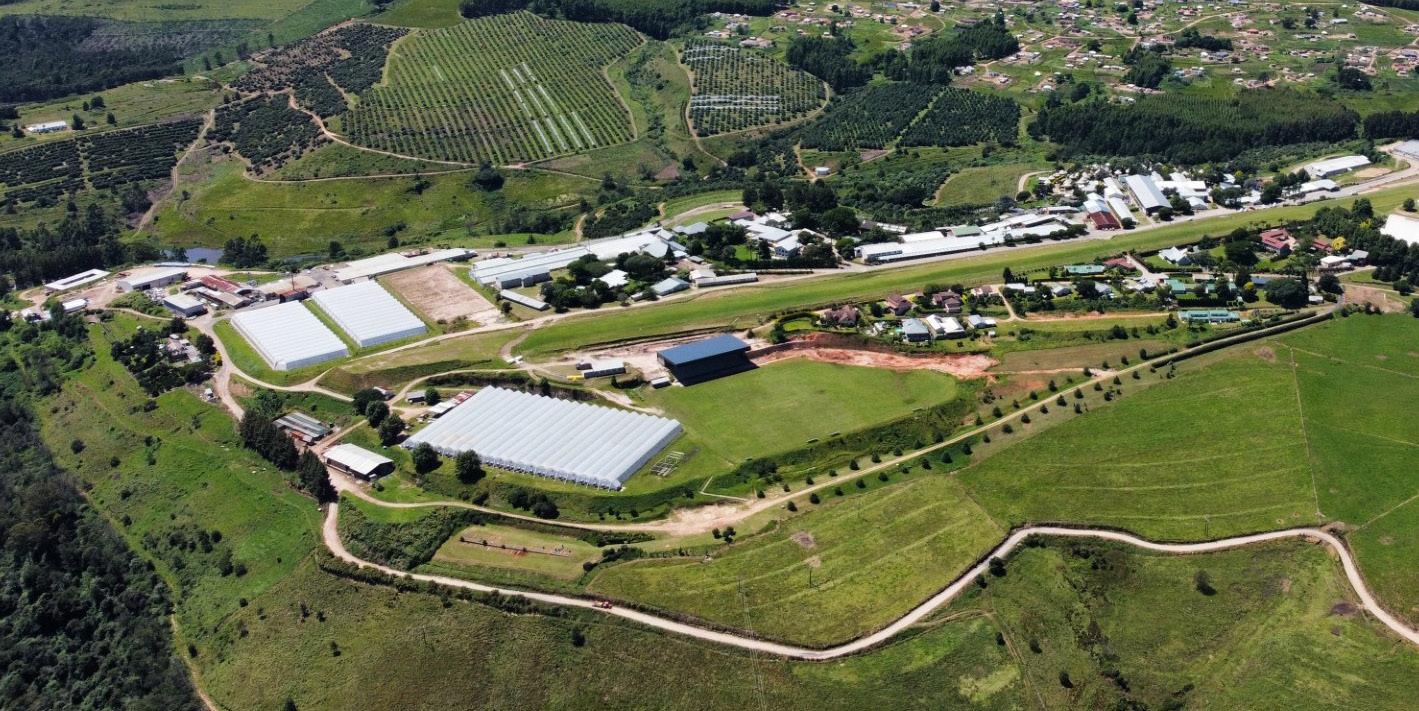
KwaSizabantu Mission
A place of restoration
The logo of KwaSizabantu Mission is a cedar tree, symbolising strength, longevity and endurance. The value of cedar trees lies in providing shade and shelter to a tired traveller for a while. The Mission also provides a temporary home for needy and broken people. It is a safe and loving environment where people can rest, heal, and recoup. And once they’ve been restored, they can continue on their journey better equipped to deal with life’s many challenges. It is indeed a place of restoration…
KwaSizabantu Mission is a community-based and non-profit organisation aimed at improving the lives of the communities they serve while spreading the Gospel. All the work they do generates improvements, both spiritually and physically within the community in which they operate. Over time, numerous buildings and agricultural projects were implemented which brought financial health. This benefitted the communities directly by creating employment and numerous opportunities while sustaining the humanitarian work and numerous upliftment programmes. The missionaries, workers, and co-workers have maintained the missionary work for more than 50 years through these various projects.
To start and build such a glorious establishment from scratch, and achieving the many goals set out, had enormous challenges and numerous obstacles to overcome along the way. These obstacles include some unfounded allegations of selfenrichment and gross inhuman violations. Luckily, the stories have since been proven untrue and exposed as a malicious onslaught on the Mission’s image by disgruntled previous members and family members (read articles about it in, for instance the publication, Noseweek).
The many milestones and success stories of KwaSizabantu Mission and the endless testimonies of restoration and help are evident of hard work, dedication, faithfulness and godly intervention. Therefore, we decided to publicise the many wonderful stories we found there… abandoned building many years back. He only had a small group of helpers, but he preached the Gospel with no resources but his faith and calling.
Reverend Stegen is the son of German immigrants who settled in rural KwaZuluNatal. He grew up in a Christian home, but as a young man, he was preoccupied with other things and did not think at first that he would be preaching the Gospel. However, he was called at a young age to work among the Zulu people and help them.
He arrived in Maphumulo, a town in the iLembe District in KwaZulu-Natal, in 1966. It is about 42 km north-west of Stanger and 38 km south-east of Kranskop. He started preaching. For prayer meetings, the early converters would gather in an old, abandoned cowshed. Although people committed their lives to God, no significant restoration occurred. This troubled him greatly.
The scriptures are, and always have been the reverend’s compass, and his ultimate source of wisdom and guidance. It is also the “flowing waters” later revealed to be pivotal to the current work done at the Mission (see the article, The Flow of Living Waters).
Transforming people’s lives
One day, a local witch asked for help of her own free will, and she was converted. From that day on, the reverend witnessed multitudes of people coming to the prayer meetings saying that they want to meet with God. The people came from the hills, valleys, and surrounding areas as the Word of God spread. People’s lives were being transformed noticeably. With all the people coming from afar, the Mission could not accommodate and provide food for them. But they could not turn them away. This prompted them to

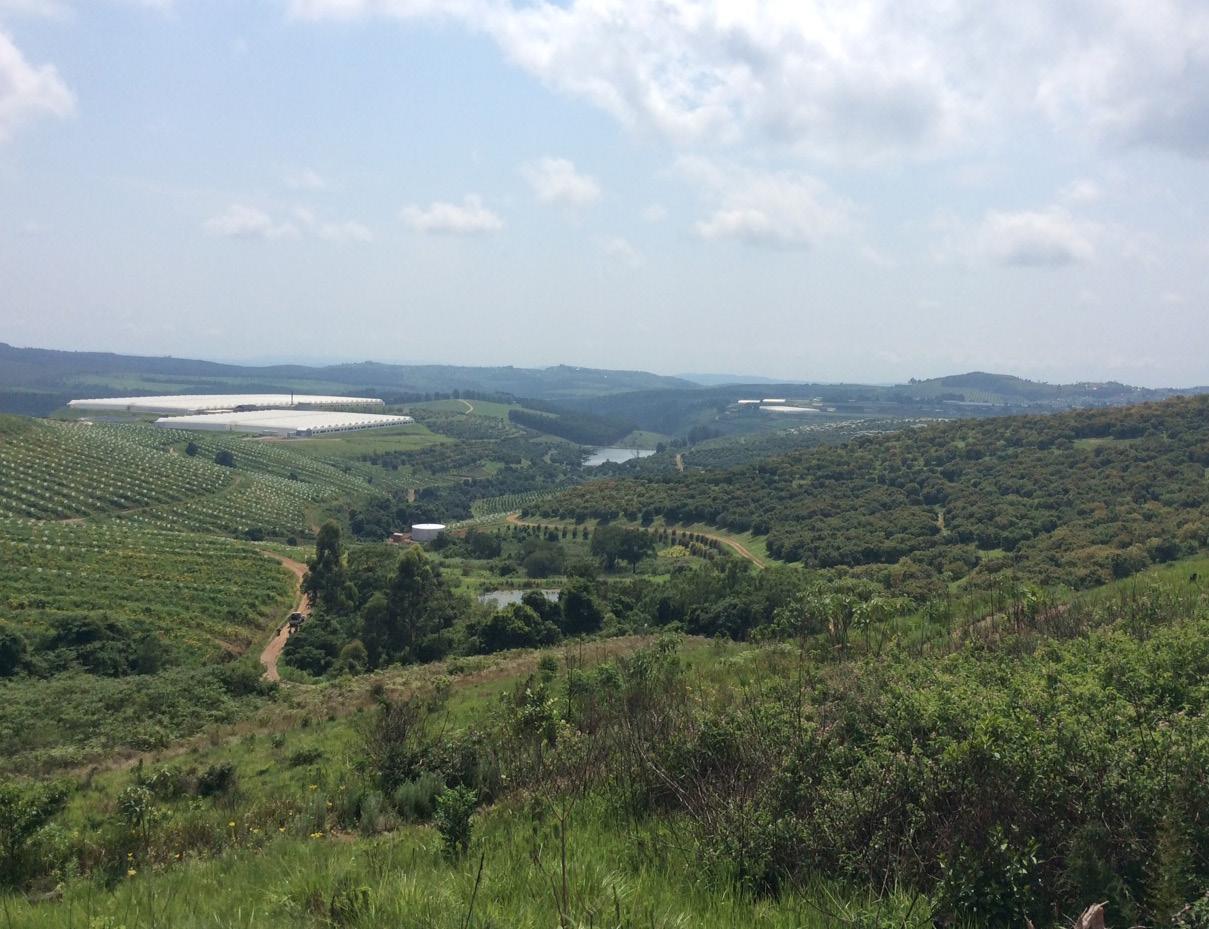
look for a place to build in Maphumulo, but every door was closed.
A few years later they found a farm called KwaSizabantu, meaning “the place where people are helped”. The reverend then realised that this was the place that God had set before them to continue His work - but it was wild and undeveloped. The need to accommodate and feed the crowds who came to hear the Gospel was, and still is, the motivating factor behind all the buildings and other agricultural projects. Because no money is collected during the church services, and there are no fundraising events, the need arose to find ways to be self-sustainable.
With their limited resources, the Mission started construction and agricultural projects to accommodate and feed the people. The revenue generated from these projects provided much needed financial health that benefitted the community directly and helped the missionaries and co-workers sustain the humanitarian work and numerous upliftment programmes.
Myriads of good works
The Mission is supported by volunteers. More than 200 people from surrounding areas volunteer at the Mission. Both local and international students spend their gap years volunteering in the many projects. People also come from all over the world to find help, help others and hear the Gospel. They come willingly, and many of them find it hard to depart again. Many of the current helpers, workers, and co-workers at the Mission are either previous broken people of volunteers who decided to help others on a more permanent basis.
As I was walking around the Mission’s grounds, I could see the hand of God working, and I have sensed imminent victory! The Mission’s position in the area is one of influence and prominence. It is clear that the Mission, supported by the communities they serve, is focused on their calling. They will overcome adversity and the many challenges they have, and still will experience on the road to further success.
Christians are God’s workmanship, created in Christ Jesus for good works (Ephesians 2:10). At the Mission, Revelation 2:26 helps them through the tough times and the bumps in the road: “He who overcomes, and he who keeps My deeds until the end, to Him I will give authority over the nations.”
Reverend Stegen’s legacy is one of positive change, and his example is one of faithfulness. In his golden years, he can rest assured that he has been obedient to his calling, despite human errors and challenges along the way. God calls ordinary people with lots of flaws and lack of experience and knowhow. Still, He provides the resources to realise the calling in His way and time. Because of this assurance, I am confident that KwaSizabantu will rise above the many deficiencies of a secular world and onslaughts of the misinformed.
Rev Erlo Stegan




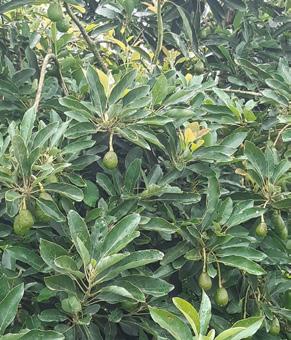
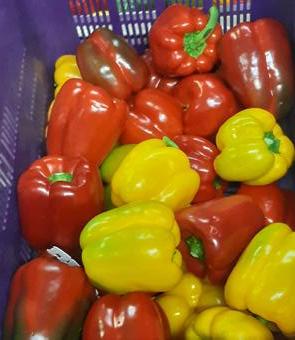
A mission
becomes sustainable
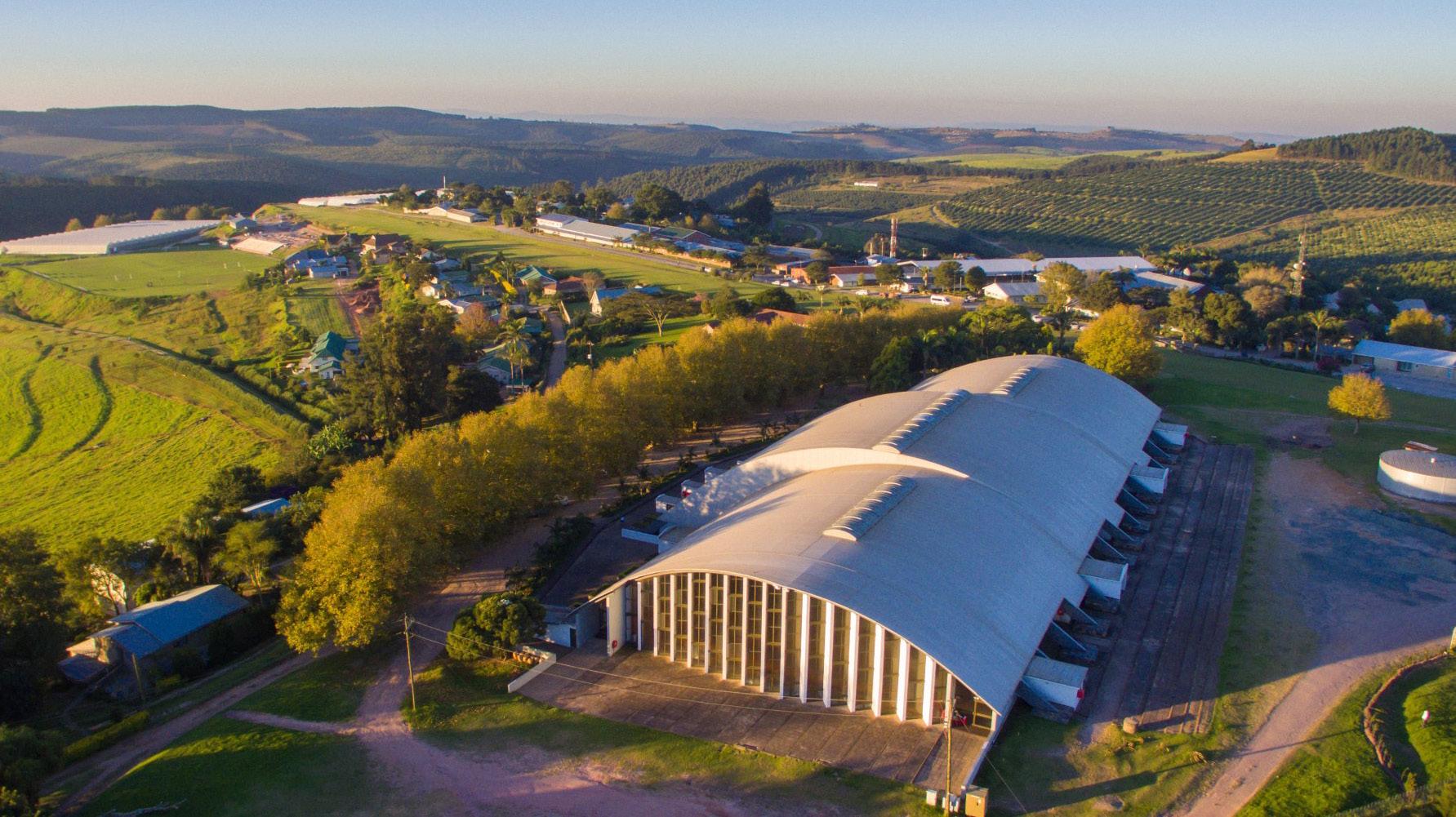
Teaching, healing, helping, and spreading the Gospel are the core essentials of a mission’s work. By implication, it means to reach out to broken and poor individuals and the communities who are served. To do the work God has called him to do, the founder of the KwaSizabantu Mission, Erlo Stegen, has over years implemented and spearheaded numerous building, agricultural, and other projects for a variety of income streams that benefit the community directly. These projects also ensure sustainability for the many outreach and upliftment programmes
The auditorium
Pivotal to the work of the Mission is the auditorium, which has a remarkable history. Originally, the reverend preached in an abandoned cowshed, which they cleaned and used for his ministry. After he experienced the revival at Maphumulo, he found that the congregation suddenly grew phenomenally as crowds of people started to come from afar. The reverend describes it in a video, “It was as if the Holy Spirit went into their homes and drove them to us…”
The church “building” very soon became too small for the vast, God-seeking crowds, and a new place had to be found. The farm, KwaSizabantu at Kranskop, seemed like the perfect place when it became available by an extraordinary circumstance. The farm’s purchase provided the opportunity to be faithful to the calling, and the name was perfect for the intended work. Since then, the Mission has grown tremendously, and the work has been blessed in abundance.
The previous auditorium, completed in 1990, could seat approximately 10,000 people. It was built over 10 years. The building was unfortunately destroyed in a blaze in June 2008. However, very soon, the Mission was inundated with offers of assistance from other churches and organisations from around the world. To rebuild the auditorium, volunteers and experts came from abroad and locally to help. Within a year, the new 10,000-seater auditorium was built and finalised.
The school
The Mission is a centre of learning, and its Domino Servite School is doing amazing work among the community’s children. As an independent English-medium, Christian school, it provides schooling for the workers and co-workers also. The school has grown from humble beginnings in 1986 into a private school that caters for children from Grade RRR to 12. Domino Servite was accredited by Umalusi in 2013 and has been an IQQA approved school since 2018. It has also been a member of ISASA since 2016.
The school principal, Ms Dorothy Newlands, remembers the early days with its many challenges. She also quickly points out that the school has enjoyed blessings in abundance and, while schools across the globe have been sadly affected by COVID-19 creating havoc, the Mission’s school has not been affected in the same way.
The Mission has a tremendous positive impact on the development of the children and the school encourages the young adults to hold onto the good Christian values they have learned. Grade 12 learners write the IEB Senior Certificate Examination, and the school has achieved a 100% Matric pass rate since it registered as an examination centre in 1988.
The restoration centre
KwaSizabantu is a place where people are helped, regardless of their colour, creed, religion, or background. The Concerned Young People of South Africa (CYPSA), housed at the Mission, is responsible for the three-week programme the addicts participate in (read the inspiring stories in the articles, So many stories to be told, and Restored lives).
The success stories are endless, and the impact the Mission has on people’s lives is immense. Hundreds of drug addicts are helped daily, and they receive spiritual help
and healing. Some of them even choose to stay behind as volunteers. Restored addicts who did not finish their schooling can also do so at the Mission.
Broken people from local communities and the world have been coming to the Mission’s rehabilitation centre for addiction and mental health treatments for decades. With a firm commitment from the patient, an entirely free, highquality treatment programme is offered, combined with experiences and spiritual support. Personalised treatment and focusing on the reason for the addiction ensure lasting success. And the positive outcome? More than 18,000 broken people have been helped and restored over the years.
Maqhogo Farm

The Maqhogo Farm is situated in the rural areas not far from the Kranskop/Eshowe areas - about a 45-minute drive from the Mission. The farm and its people also provide some fantastic stories and insights into the giving spirit of Reverend Stegen.
I was told that land, managed in the 1980s by Canadian missionaries, was offered to the reverend around 2009. They requested that he manages the humble facilities while teaching the locals how to farm, based on the KwaSizabantu Mission’s successful work. At that stage, the area consisted of virgin land only. The harsh environment, constant droughts, and lack of job opportunities made it complicated for the locals to earn a decent living or farm successfully to provide for their needs. Reverend Stegen agreed to take over the farm, provided the infrastructure (electricity), and then started with pineapples and simultaneously tested different plants and trees.
Very soon, local farm owners requested help and offered a piece of land in return. Today the farm boasts many hectares covered with a wide range of fruit trees. It includes 10 hectares of the exotic eastern fruit called dragon fruit; 10 hectares of mangoes; three hectares of litchis (with an additional three hectares to be planted soon), and 18 hectares of pomegranates. A total of about 25 hectares more are still available to be planted. Additionally, more than 50 hectares in Ntsongeni are under irrigation. Grass and lucerne are baled and made available to the communities as feed for their animals.
More than 500 households are now benefitting from the successful farming, and employment is provided along with skills development and training. Community gardens have been developed together. The Mission provides seedlings, fertiliser, water, and much-needed training. As a government official once remarked during a visit to the farm, “This seems like the country’s solution - this is a win-win situation where the community and farm owners work together for sustainable farming that benefits all the stakeholders.”
Sustaining projects to support missionary work
The hectares of greenhouses at KwaSizabantu are a sight to see! What started as small vegetable gardens meant to feed the crowds of people turned into hectares and hectares of beautiful, hydroponically-grown bell peppers and lettuce without pesticides.
After seeing the vast amount of successful farming projects, there is no doubt in my mind that the people of KwaSizabantu are faithfully serving God and His people. The many successful projects reveal to me how God is working deeply and powerfully. The Mission has gone from strength to strength, and the successful projects make it possible for them to help people and spread the Gospel. The bell peppers and other vegetables; avocados; honey, dairy products; bottling plants; butchery, bakery; coffee shop and many fruit orchards help them pay for expenses related to the upliftment programmes.
The KwaSizabantu Mission lives up to its calling to take care of the needy and broken people. They are entirely selfsustained through their building and farming projects, including the bottling of spring water from underneath the earth. The successful activities also generate enough money to help communities and others in need and spread the Gospel.
Workers, co-workers, community members, and high-profile decisionmakers hold the Mission’s founder and management in high esteem. They are outspoken about the respect they have for them. In the broken, dog-eat-dog world that we must live and work in, the presence of peace, love, respect, and unity you experience at the Mission will prompt you to go back again, and again - all in pursuit of the same tranquillity and loveliness. Their peace clearly stems from being faithful to your calling, no matter what...
Inside of the auditorium pre-COVID
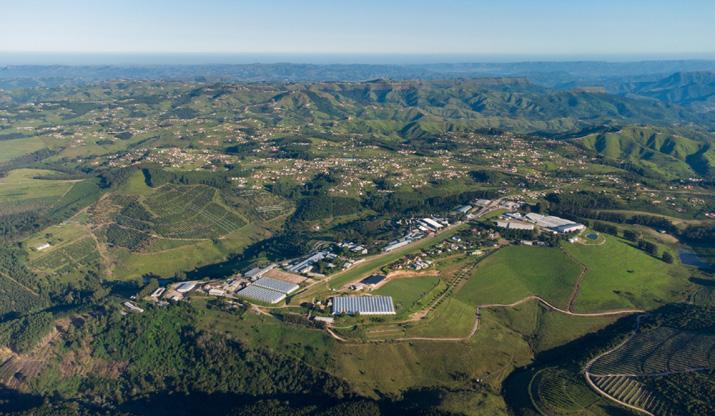
The flow of living waters

“If anyone is thirsty, let him come to Me and drink. For the Scriptures, declare rivers of living water will flow from the heart of anyone who believes in me.” John 7:37
The aQuellé, customized bottles of flavoured spring water, made from Kwa-Zulu Natal’s natural pure water, are back on the shelves in South Africa and the country’s people are rejoicing! For more than two decades aQuellé was one of the leading water brands until some retailers temporarily removed it from their shelves following controversy fuelled by the mainstream media. Hopefully the controversy is now a thing of the past because this popular and wholesome brand of water has surely been missed!
The aQuellé water is bottled by Ekhamanzi Springs (PTY) Ltd and the plant for the popular flavoured water is situated at the KwaSizabantu Mission. The story of the bottling plant began when a child told the founder of the Mission about a dream she had of treasure hidden in the ground. Under the impression that the child meant gold and diamonds, the Missions’ people started searching and digging, but none could be found. In 1997, when they continued to dig for the treasure, they came across a natural water source that was flowing underneath the earth’s surface into an aquifer filled with the purest spring water. Because of the quality of the water, they were told that it was too good to be used for irrigation and other normal practices. So, they bottled the water and called it aQuellé (meaning spring waters).
In 1998, aQuellé built their first 360m2 bottling plant at the KwaSizabantu Mission and has since expanded it to over 18,000m2 to date with the prospect of extending it even further. In 2016, aQuellé acquired a
second bottling plant in Franschhoek, and they are adding another new plant soon. Both the old and new plants have been equipped with the latest technology, state-of-the-art machinery and process plant equipment for labelling, shrink-wrapping, palletising and then distribution.
What makes aQuellé so special?
James 1:17 says, “Everything good comes from God. Every perfect gift is from Him.” This is the secret ingredient of the spring water. What makes it so special is that every single bottle of aQuellé water has the goodness of God in it.
The spring water is of exceptional quality and taste. The water is fruity flavoured, carbonated, and then bottled in unique, customised bottles that makes it stand out from the rest. Over the years, different flavours were added to the water. As of today, they have a total of 10 different flavours.
The economic impact of aQuellé
As one of South Africa’s leading brands, aQuellé stands out because of its community-based operations. The company is the biggest employer in the area. They employ more than 300 people, of which the majority is from the surrounding rural communities. All the employees are provided with training to operate the machines, do quality control, and perform good manufacturing processes.
Job opportunities in the area are hard to come by, so the aQuellé bottling plant is like a beacon of light for the communities. It has provided opportunities for community members to earn money so they can support their families with dignity as the workers earn an honest living. Because of the nature of the company, their marketing campaigns and outreach events frequently have local participation that directly benefits the communities.
The bottling plant is one of the many projects that is run as a business and funding mechanism to ensure they are self-funded to sustain the work of the Mission. The communities are dependent on the jobs that are being created by the water bottling plant and the other projects. With the revenue generated from these businesses, the Mission has been able to expand their businesses and assist more people and finance their outreach programmes.
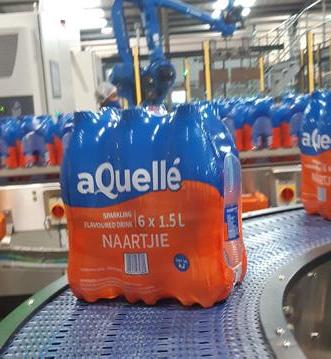


The social impact of aQuellé
As a community-based business, one of their core values and focus is the upliftment of rural communities. The business sponsors a great number of community and sporting events throughout the country such as the Midmar Mile, Mudman Series, Tour Durban, and the Spar Women’s Challenge. The Mission’s outreach programmes include local feeding schemes for orphaned children, an HIV/Aids care centre, and a broad spectrum of community projects. Special note from the editor: An editor-in-chief of a digital newspaper called on the public to stop drinking “unholy water” (referring to aQuellé) in 2020. This greatly impacted the company that produces the product. Consequently, the Mission and stakeholders suffered significant losses which affected the livelihoods of the communities that benefit from the sales of the bottled water. There are consequences to the bias media’s reporting and in this case the very community the company is trying to help was impacted negatively.
We are living in a world where the media is using their platform to sway public opinion, whether the information is true or not. When you are doing the work of God, there will always be people who will try to bring you into disrepute, especially when you are succeeding.
I am thrilled that since the request for the ridiculous boycott was made following the unfounded allegations, the allegations were proven to be false by an independent panel. I now call upon all our readers to support this Mission and to buy this brand again. Together we can help restore the damage done to this community-based business and assist in making a difference in the community. Apart from helping the local communities, you will enjoy the uniquely South African flavours. I do!!



